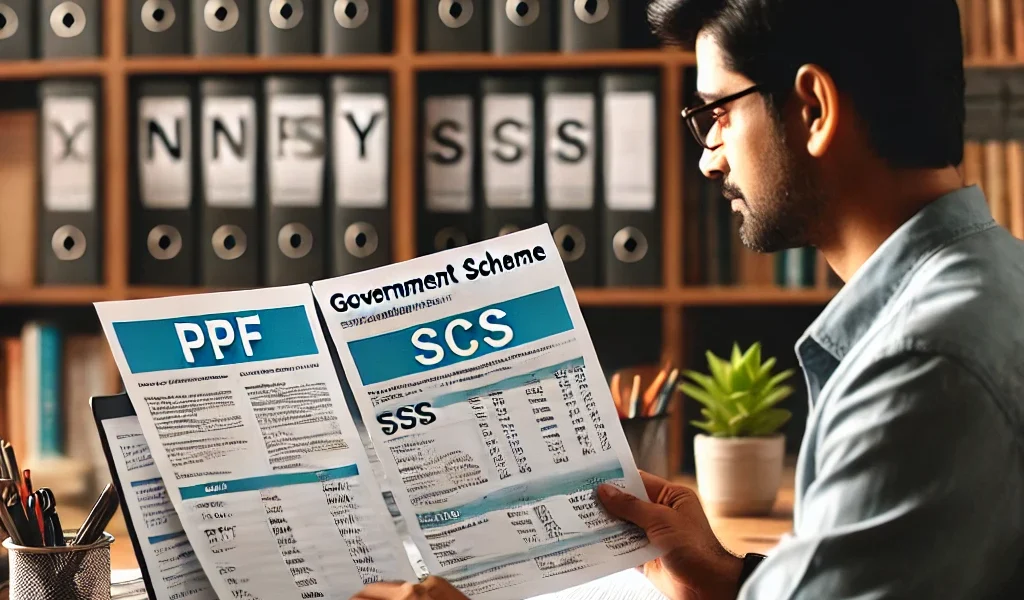Introduction
Many taxpayers are unaware that government schemes not only provide financial security but also come with hidden tax benefits. The Indian government offers several investment and savings schemes that can help individuals and businesses reduce their tax liability while building long-term wealth.
In this guide, we will explore the most overlooked tax benefits in government-backed schemes, their eligibility, and strategies to maximize deductions while staying compliant with the law.
1. Public Provident Fund (PPF) – Triple Tax Benefits
a) Section 80C Deduction
- Contributions to PPF qualify for a deduction up to INR 1.5 lakh per financial year.
- This is available for accounts held by self, spouse, or children.
b) Tax-Free Interest Earnings
- Interest earned on PPF is completely tax-free under Section 10(11).
c) Tax-Free Maturity Amount
- The maturity proceeds, including principal and interest, are 100% tax-exempt.
Maximization Tip: Invest at the start of the financial year to earn the highest possible tax-free interest.
2. National Pension System (NPS) – Extra Deductions for Retirement Savings
a) Section 80CCD(1) – Employee Contribution
- Deduction up to 10% of salary (20% for self-employed) under overall Section 80C limit of INR 1.5 lakh.
b) Section 80CCD(1B) – Additional Deduction
- Extra deduction of INR 50,000 over and above the 80C limit.
c) Employer Contribution – Additional Tax Savings
- Contributions made by an employer (up to 10% of salary) are exempt from tax under Section 80CCD(2).
Maximization Tip: If employed, negotiate for an NPS contribution from your employer for higher tax savings.
3. Sukanya Samriddhi Yojana (SSY) – Best for Girl Child Savings
a) Section 80C Deduction
- Deposits qualify for a deduction up to INR 1.5 lakh per year.
b) Tax-Free Interest Earnings
- Unlike bank FDs, SSY interest is fully tax-free.
c) Tax-Free Maturity Proceeds
- At 21 years of age, the total amount is 100% tax-exempt.
Maximization Tip: Open an SSY account immediately after your daughter’s birth for maximum tax-free growth.
4. Senior Citizens’ Savings Scheme (SCSS) – Guaranteed Returns with Tax Benefits
a) Section 80C Deduction
- Deposits made under SCSS qualify for a deduction up to INR 1.5 lakh.
b) Higher Interest Rates with Stability
- Offers higher interest rates compared to bank FDs.
c) Interest Taxation
- Interest earned is taxable, but TDS is deducted only if it exceeds INR 50,000 per year.
Maximization Tip: Senior citizens should split deposits among family members to avoid exceeding the TDS threshold.
5. Pradhan Mantri Vaya Vandana Yojana (PMVVY) – Guaranteed Pension with Tax Benefits
a) Section 80C Deduction (Indirectly Applicable)
- While PMVVY does not offer direct 80C deductions, investments in this pension plan allow regular guaranteed income.
b) Exemption on Maturity Proceeds
- The maturity amount received is tax-free.
Maximization Tip: Retired individuals should consider PMVVY for stable pension income with low tax liability.
6. National Savings Certificate (NSC) – Risk-Free Investment with Tax Benefits
a) Section 80C Deduction
- Investments up to INR 1.5 lakh qualify under Section 80C.
b) Tax-Free Reinvestment of Interest
- Interest is compounded annually and reinvested, making it eligible for deduction under 80C.
c) Taxable Maturity Amount
- The final maturity amount is taxable, but if reinvested, tax liability is reduced.
Maximization Tip: Reinvest matured NSC amounts to continue tax benefits.
7. Post Office Monthly Income Scheme (POMIS) – Regular Income with Tax Efficiency
a) No Direct Tax Benefits
- Unlike PPF, POMIS does not offer Section 80C deductions.
b) Low Taxable Interest
- Interest is taxable but not subject to TDS.
Maximization Tip: Reinvest interest into tax-saving instruments like PPF or SSY.
8. Rajiv Gandhi Equity Savings Scheme (RGESS) – Tax Benefits on Stock Investments (For First-Time Investors)
a) Section 80CCG Deduction
- Eligible for an additional deduction of 50% of the invested amount, up to INR 50,000.
b) Conditions for Eligibility
- Only first-time equity investors can claim the benefit.
Maximization Tip: Use RGESS to enter the stock market while enjoying tax savings.
9. Atal Pension Yojana (APY) – Tax-Saving Retirement Scheme for Unorganized Sector
a) Section 80CCD(1B) Deduction
- Contributions qualify for an extra INR 50,000 deduction.
b) Government Contribution (For Eligible Individuals)
- The government may co-contribute to the scheme.
Maximization Tip: Invest early in APY for higher pension benefits with tax deductions.
10. Other Government Schemes with Tax Benefits
- Employee Provident Fund (EPF): Contributions up to 12% of salary are tax-free.
- Kisan Vikas Patra (KVP): Provides compounded returns, but taxable at maturity.
- Voluntary Provident Fund (VPF): Allows additional tax-free contributions beyond EPF.
Conclusion
Government-backed investment schemes provide hidden tax-saving opportunities that many individuals overlook. By strategically investing in PPF, NPS, SSY, SCSS, PMVVY, NSC, and APY, taxpayers can reduce their taxable income while securing their financial future.




